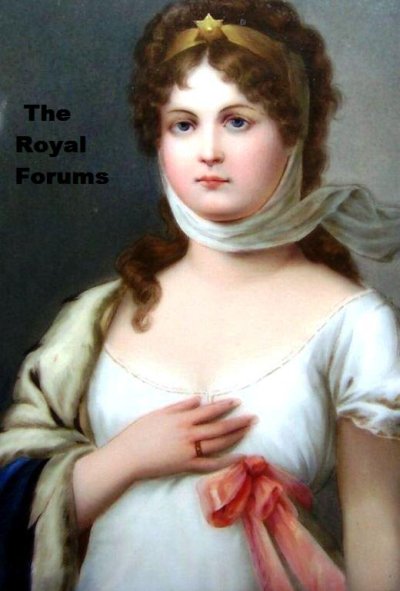- Joined
- Aug 13, 2004
- Messages
- 27,113
- City
- São Paulo
- Country
- Brazil
Friedrich-Wilhelm III, King of Prussia (Potsdam, 3 August 1770 – Berlin, 7 June 1840); married 1stly Berlin on 24 December 1793 Duchess Luise Auguste Wilhelmine Amalia of Mecklenburg-Strelitz (Hannover, 10 March 1776 - Hohenzieritz, 19 July 1810); married 2ndly at Charlottenburg on 9 November 1824 Countess Auguste von Harrach (Harrach, 30 August 1800 - Homburg, 5 June 1873)
Dynasty: Hohenzollern
Reign: 1797 - 1840
Predecessor: King Friedrich-Wilhelm II of Prussia
Successor: King Friedrich-Wilhelm IV of Prussia
Children: King Friedrich-Wilhelm IV of Prussia; Emperor Wilhelm I of Germany, Emperor of Prussia; Empress Alexandra Feodorovna of Russia; Princess Frederica of Prussia; Prince Karl of Prussia; Grand Duchess Alexandrine of Mecklenburg-Schwerin; Prince Ferdinand of Prussia; Princess Luise of The Netherlands and Prince Albrecht of Prussia
Parents Friedrich-Wilhelm: King Friedrich-Wilhelm II of Prussia and Landgravine Friederike Luisa of Hesse-Darmstadt
Parents Luise: Grand Duke Karl of Mecklenburg-Strelitz and Landgravine Friederike of Hesse-Darmstadt
Siblings Friedrich-Wilhelm: Princess Friederike of Great Britain and Hannover, Duchess of York; Princess Christine of Prussia; Prince Ludwig of Prussia; Queen Wilhelmina of The Netherlands; Electress Auguste of Hesse; Prince Karl of Prussia and Prince Wilhelm of Prussia
Siblings Luise: Duchess Charlotte of Saxe-Altenburg; Duchess Karoline and Duke Georg Karl of Mecklenburg-Strelitz; Princess Therese of Thurn and Taxis; Duke Friedrich Georg of Mecklenburg-Strelitz; Princess Frederika of Prussia, later Princess of Solms, later Queen of Hannover; Duke Georg, Duke Friedrich Karl and Duchess Auguste Albertine of Mecklenburg-Strelitz
Dynasty: Hohenzollern
Reign: 1797 - 1840
Predecessor: King Friedrich-Wilhelm II of Prussia
Successor: King Friedrich-Wilhelm IV of Prussia
Children: King Friedrich-Wilhelm IV of Prussia; Emperor Wilhelm I of Germany, Emperor of Prussia; Empress Alexandra Feodorovna of Russia; Princess Frederica of Prussia; Prince Karl of Prussia; Grand Duchess Alexandrine of Mecklenburg-Schwerin; Prince Ferdinand of Prussia; Princess Luise of The Netherlands and Prince Albrecht of Prussia
Parents Friedrich-Wilhelm: King Friedrich-Wilhelm II of Prussia and Landgravine Friederike Luisa of Hesse-Darmstadt
Parents Luise: Grand Duke Karl of Mecklenburg-Strelitz and Landgravine Friederike of Hesse-Darmstadt
Siblings Friedrich-Wilhelm: Princess Friederike of Great Britain and Hannover, Duchess of York; Princess Christine of Prussia; Prince Ludwig of Prussia; Queen Wilhelmina of The Netherlands; Electress Auguste of Hesse; Prince Karl of Prussia and Prince Wilhelm of Prussia
Siblings Luise: Duchess Charlotte of Saxe-Altenburg; Duchess Karoline and Duke Georg Karl of Mecklenburg-Strelitz; Princess Therese of Thurn and Taxis; Duke Friedrich Georg of Mecklenburg-Strelitz; Princess Frederika of Prussia, later Princess of Solms, later Queen of Hannover; Duke Georg, Duke Friedrich Karl and Duchess Auguste Albertine of Mecklenburg-Strelitz
Last edited:


